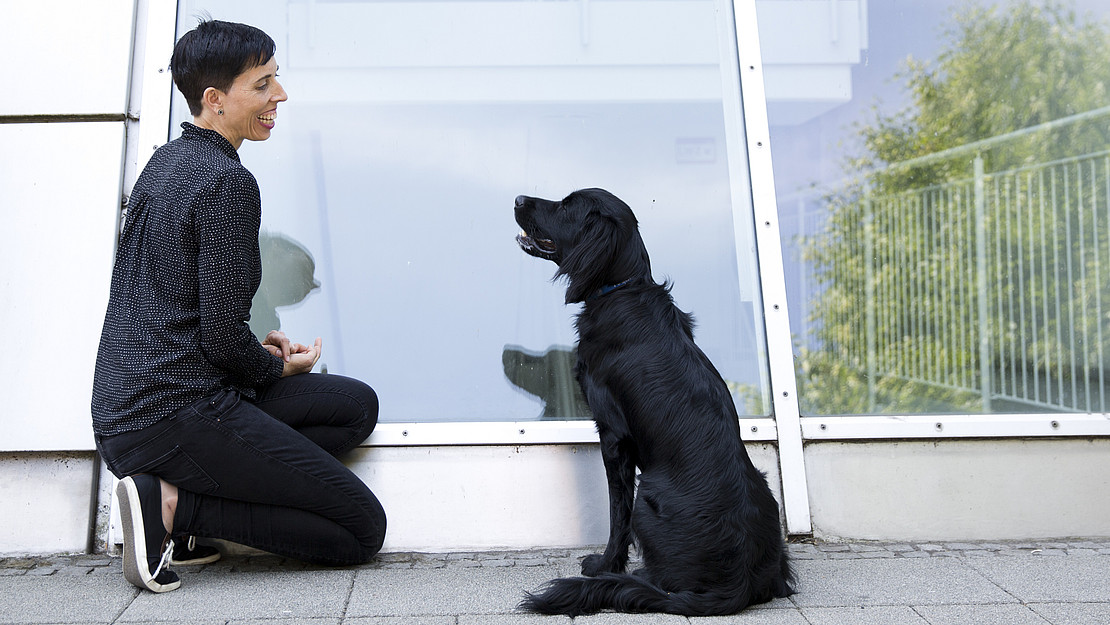This page contains automatically translated content.
From wild animal to family member: Prof. Dr. Mieke Roscher researches the history of the human-dog relationship.
 Image: Sonja Rode
Image: Sonja RodeShe is currently writing a political animal history of the "Third Reich"; but human-animal studies could also contribute to the understanding of other eras, Roscher says.
From wild animal to family member: "For about 16,000 years, humans and dogs have shared house and yard, play and death, food and companionship. Humans and animals have evolved together," Roscher says. Hunting and guard dogs enabled early humans to find new ways of gathering food and living together. Pastoralism, for example - an economy in which prehistoric humans followed large herds of non-domesticated animals - evolved through a kind of division of labor between humans and domestic dogs, he says. "In the process, over the centuries and millennia, the dog went from being a farm animal that was also kept as a companion, more and more to a companion that also fulfills certain benefits, and ultimately to a family member." However, Roscher disagrees with the frequently voiced thesis that dogs are often treated like humans, saying that the animals are more likely to be exaggerated into perfect beings.
Dogs as counterparts: The popularity of dogs as human companions is also due to the fact that people see qualities in them that they look for in fellow humans - or in themselves. A dog can embody loyalty, companionship, strength or compassion (admittedly also negative concepts such as violence and fear). Because one dog breed represents more of this, the other more of that quality, some people tend to look for a golden retriever as a companion, others for a pug, Roscher explains: "Over the years, many different types of dogs have developed for that reason, too."
Dogs as accessories: the ever more differentiating dog breeding is the result of a society that lives in abundance, the historian emphasizes. Whereas farm animals were initially bred only to make them more nutritious or hardy, dog breeding since the end of the 19th century has largely been about using new breeds to serve the ideals of owners who adorned themselves with them. The "agony breeding" is therefore a western problem of a highly capitalistic society with its ever stronger becoming urge after individualization.
Dogs in the Nazi era: In the early 1930s, the merits of individual dog types were explicitly emphasized, while mixed breeds were considered bastards. The Gleichgeschaltet breed clubs conducted experiments on dogs to prove the superiority of certain breeds - other animal species were not examined to the same extent for "racial" differences. From October 1939 onward, all dogs had been patterned and certain breeds, such as the German shepherd or the Doberman, had been recruited for the front. "From 1942 on, mixed breeds were also sent to the front, and in total at least 100,000 dogs died at the front during World War II. To the National Socialists, the friend and loyal companion stylized as a comrade was ultimately also just material," the historian said.
In her future research, Roscher plans to investigate, among other things, what influence propaganda had on the treatment of animals, as well as to transfer the resulting models of political animal history to other eras. In addition, she wants to look at the relationship of humans to other farm animals and to wild animals.